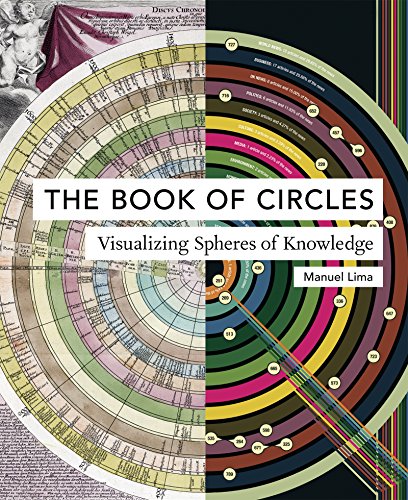
I. The Book of Circles [2017] by Manuel Lima – ★★★★
This illustrated non-fiction is all about the human presentation of knowledge through circles. The author states how natural it is for humans to try to classify and systematise all sorts of knowledge, and the circle serves as a perfect vehicle for doing so because it is a perfect geometrical figure standing for the Sun, among other things, and representing a multitude of other concepts, including movement, unity, wholeness, perfection and infinity. Being a shape that is omnipresent in nature, the circle may also be attracting our attention because of our innate evolutionary tendency to seek out human faces/eyes.
A large chunk of this book is devoted to showing various circles being used to illustrate and explain all sorts of concepts and progressions, from the presentations of the solar system, scientific theorems and alchemical tables to city maps, world economics and online engagements. There are things in this book which I never thought have been or could have been analysed using a circle, including the “Lineage of Sin in the Bible” (2009) by Anna Filipova and the changing colour of Lego sets (2015) by David Eaton.
Continue reading “Visualizing Spheres & Branches of Knowledge: “The Book of Circles”, & “The Book of Trees””

